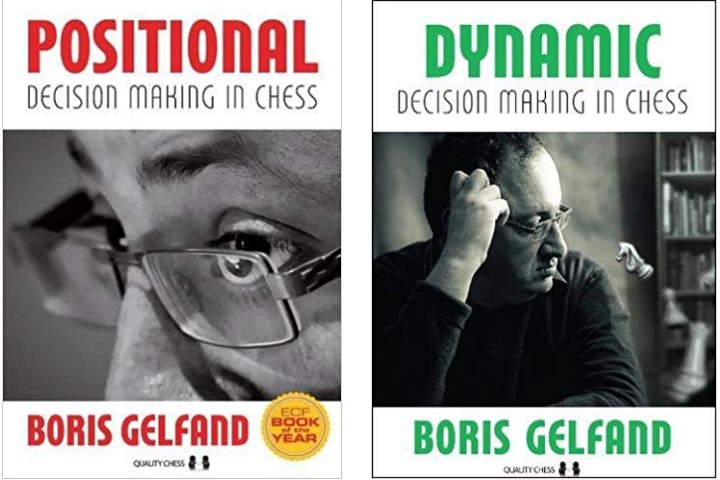


Dear Boris, the Candidates Tournament 2020 in Yekaterinburg was the last live-tournament before the corona lockdown. Unfortunately, it was postponed after the first seven rounds. But how did you like the chess so far? Is there any game that particularly impressed you?
In the first seven rounds we saw quite a few interesting games. Ian Nepomniachtchi's ending against Anish Giri in round 1 and Nepo's win against Wang Hao were the most memorable games for me.
You have a lot of experience with the Candidates. In 1991 you qualified for the first time for the Candidate Matches, in 2013 you played in the Candidates Tournament in London. What makes Candidates Tournaments and what made Candidates Matches special and in how far are they different to other top tournaments in which the stakes are high?
I have always thought that the Candidates Tournament is the most important tournament in the calendar. When I was young I immensely enjoyed reading the books about the Candidates tournament or matches in 1959, 1962, 1965 and 1968.

A young Boris Gelfand
I always wanted to qualify and do well in these events, it was more important to me than keeping or improving my rating. That’s what was missing in the years 1996-2006 and it badly affected my performance in this period. The difference between the Candidates and a regular tournament is that only victory counts, one cannot be satisfied with being second. There is no "good performance", there is only the winner.
What does it take to win in the Candidates and to become a World Championship Challenger?
It needs a combination of factors: the ability to fight under the highest pressure, to be well prepared chess-wise, physically and mentally. And you need luck as well, as usual.
How do the players prepare for such an important event?
I always arranged a couple of training sessions and invited some colleagues to join my trainer Alexander Khuzman and me during such training camps.
Let’s go back in time. Do you still remember how it felt to qualify for and to play in the Candidates Matches in 1991?
Yes, I do remember. I was just 22 and had unlimited confidence. So I considered myself as one of the strongest players in the World and thought that my qualification was very natural.
And how did it feel to play in the Candidates Tournament in 2013 – as a former World Championship Challenger who almost became World Champion in 2012 you had to fight against the younger generation of top players?
I was very motivated to win London and to qualify for another match. I was familiar with all the players and tried my best. The tournament was not successful but my preparation paid off in the following events. I believe that in 2013 I played the best chess of my career.
From 1991 to 2013 you played in seven World Championship cycles. Do you have any memories of these events that are particularly fond to you?
Yes, sure. I am proud of my play in the Candidates match vs Vladimir Kramnik in 1994 and in the World Championship Tournament in 2007 in Mexico, where I shared second and third place with Vladimir Kramnik. I was excellently prepared and played well. However, between 1998 and 2007 I had almost no invitations to top events and this prevented me from playing more confidently and I missed number of opportunities.
How do you think chess has changed in the last 30 years and how did you experience this change?
Many things have changed. Nowadays everyone has access to huge databases. A lot of high level chess has been played in these 30 years and it helped to reassess a lot of positions. Engines have become an important part of chess and helped to open the boundaries of chess game.
30 years ago it was important to get information. Nowadays we are overloaded with it. It is much more important to analyze it and to my make correct conclusions. However, the key factors to success are the same: talent, work ethic, a strong character and believing in one’s vision of chess.
You are a great admirer and fan of Akiba Rubinstein. Did you see the influence of Rubinstein (or another classical player) in any of the games that have been played so far in the Candidates or is "Modern Chess" completely modern now, with no regard to the classics?
It is a very rare to see that a modern game copies the exact same idea or maneuver from a classical game. But the absolute majority of top players have studied classical games well and it has influenced their chess. Magnus Carlsen is the best example. When he quotes a game like Flohr-Goldberg, played in 1949, in his press-conference no further comment is needed.
Your books Dynamic Decision Making in Chess and Positional Decision Making in Chess appeared in 2015 and 2016 but are already considered as classics. In these books you give deep insights into the mind of a top grandmaster but what I found even more fascinating is your seemingly unlimited enthusiasm for analyses and your love and passion for chess that shines through virtually every page of the book. What kindled this passion and what has kept it going throughout your long and illustrious career?

I am amazed with the richness of chess and I am happy to start my day with chess and finish it with chess. It makes me happy.